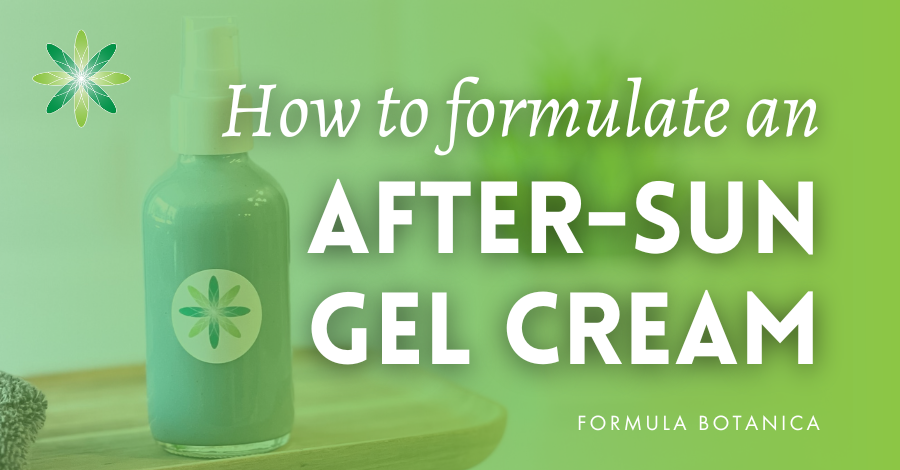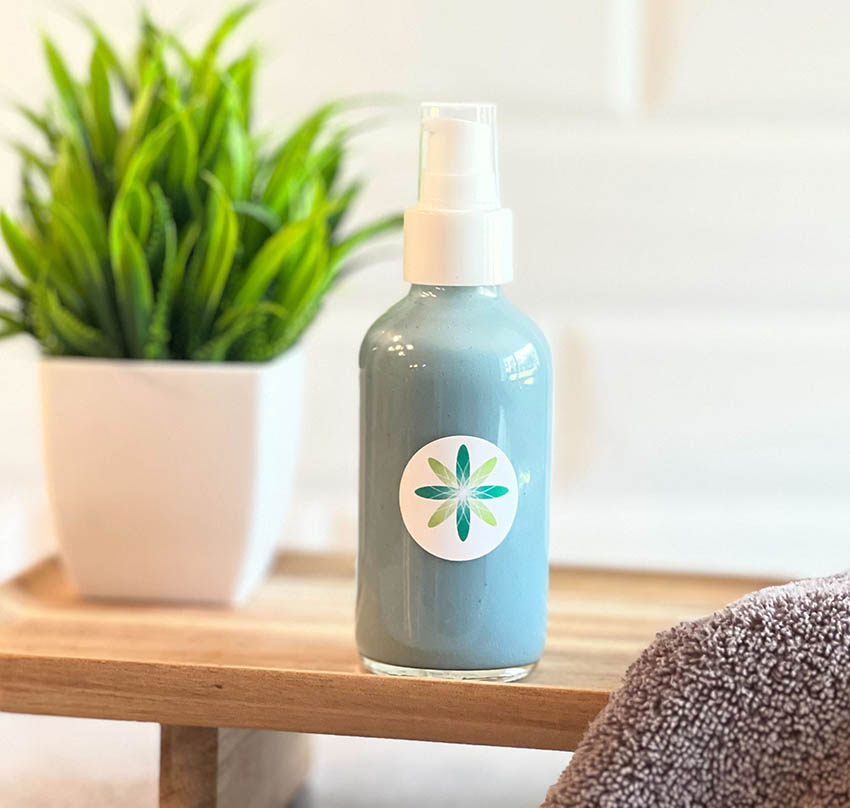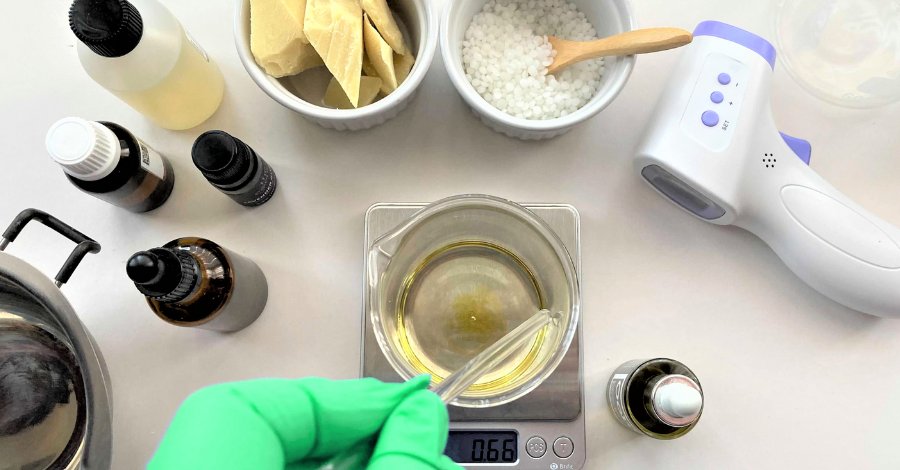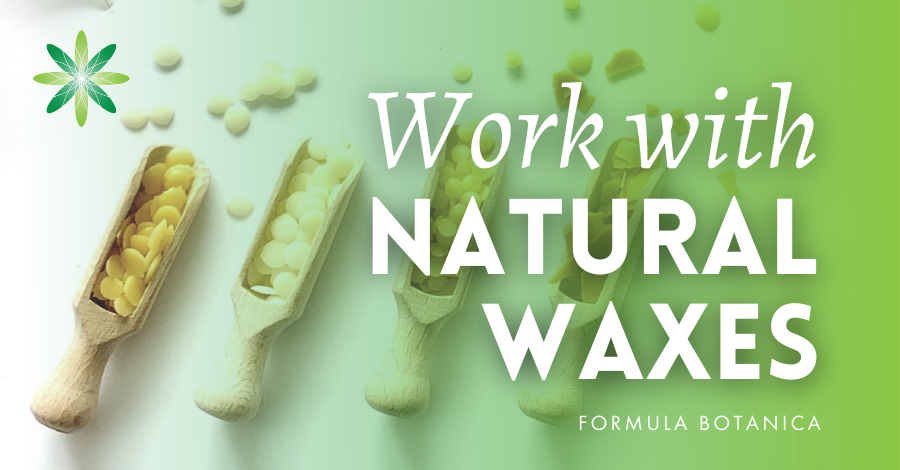We focus so much attention on the need to apply sun-protection-factor (SPF) products before we step outdoors, but how many of us think about giving our skin some extra care after we’ve enjoyed some fun in the sun? If your sun care ends with daylight hours, then take a look at our formulation here for a soothing gel cream that is designed to give our skin some much-needed after-sun TLC.
Interestingly, this after-sun gel cream formulation arrives just as the cosmetics industry is seeing vast growth in the sun care sector. An article in Cosmetics Business discusses how brands are aware that the message about using effective SPF products, not just in the summer months but all year round, has gotten through to consumers. They are now looking at innovative ways to deliver sun care in products that are more like regular cosmetics and easy to adopt in our daily skincare routines (i). This trend is described as “the beautification of sun care”.
Cosmetics Business also mentions the new category of “sun serums,” which provide SPF properties in more appealing formulations that are less heavy on the skin than traditional sunscreen cosmetics. While not designed to offer any SPF, our after-sun gel cream complements this genre nicely.
While we’re discussing SPF cosmetics, we strongly advise you not to make your own sunscreens at home. We explain the reasons in these articles:
5 reasons why you should not make homemade sunscreen
Why you should not use coconut oil as a sunscreen
About our after-sun gel cream
Your skin is designed to repair itself after responsible sun exposure, but by giving your skin an extra boost with vitamin B3, aloe vera, and the other high-performance ingredients we include in our formulation, you can help nourish and soothe the skin.
Our after-sun gel cream has a light viscosity that can easily be dispensed from a pump bottle. When applied to the skin, you will notice that it absorbs into the skin very nicely. Our favourite time to apply this formula is right after a shower, when your skin is still damp. This gel cream formula has a noticeably soft feel on the skin, thanks in part to the ingredients Natrasil™ and allantoin, and does not leave the heavier feel you might experience with other lotions. The combination of ingredients leaves a light and flexible film for added barrier protection and to maintain hydration within the skin.
If you have spent excessive time in the sun, then you particularly want to avoid heavier after-sun creams. Some experts warn against applying a thicker cream that could trap heat on the skin and exacerbate the inflammation and “burn” feeling on the skin (ii).
 Key ingredients in our after-sun formulation
Key ingredients in our after-sun formulation
Allantoin: this promotes cell proliferation and soothes and protects the skin.
Aloe vera: aloe vera has great moisturising properties, and its structure forms a protective film for the skin to promote healing and after-sun recovery. See our formulator’s guide to aloe vera for in-depth information on its properties.
Hyaluronic acid – low-molecular-weight (LMW) and high-molecular-weight (HMW): hyaluronic acid is known for water-storing properties, which help aid in skin recovery after sun exposure.
Niacinamide: this improves skin hydration and provides barrier protection.
Bisabolol: this ingredient has anti-inflammatory properties and helps protect the skin from daily stress.
The ideal packaging
Our formulation is a lower-viscosity gel cream that works nicely in a pump bottle or airless container. A coloured or frosted container that provides protection from the light would help maintain the integrity of the formulation. Avoid clear glass containers for this formulation.
Our formulation: After-sun gel cream
Makes: recommended trial batch size: 100g.
Formulation: a hot process.
Time taken: 30 minutes.
Level: beginner/intermediate-level formulation to personalise and adapt.
| Phase | Ingredients | INCI | Weight (g) |
| A | Siligel™ | Xanthan Gum, Lecithin, Sclerotium Gum, Pullulan | 1.50 |
| A | Cucumber hydrosol | Cucumis sativus (cucumber) distillate | 10.00 |
| A | Allantoin | Allantoin | 0.40 |
| A | Chamomile hydrosol | Matricaria chamomilla (chamomile flowers) hydrosol water | 66.86 |
| A | Aloe vera | Aloe barbadensis leaf juice | 0.05 |
| B | Ritamulse | Glyceryl stearate (and) Cetearyl alcohol (and) Sodium stearoyl Lactylate | 4.00 |
| B | Natrasil™ | Hydrogenated ethylhexyl olivate, Hydrogenated olive oil unsaponifiables | 2.00 |
| B | Sweet almond oil | Prunus amygdalus dulcis (sweet almond) oil | 6.00 |
| B | Squalane | Squalane | 2.45 |
| C | Propanediol | Propanediol | 2.00 |
| C | Sodium hyaluronate (low molecular weight) | Sodium hyaluronate | 0.02 |
| C | Sodium hyaluronate (high molecular weight) | Sodium hyaluronate | 0.02 |
| C | Niacinamide | Niacinamide | 1.5 |
| C | Blue pigment | Sepiolite, Indigofera tinctoria extract | 0.2 |
| D | Bisabolol | Bisabolol | 1.0 |
| D | Rosehip extract | Rosa canina (rosehip) seed extract, and Rosmarinus officinalis (Rosemary) | 0.5 |
| D | Vitamin E | Tocopherol | 0.5 |
| E | Euxyl K903 | Benzyl alcohol (and) Benzoic acid (and) Dehydroacetic acid (and) Tocopherol | 1.0 |
| Total: 100.00 |
Equipment:
- Scales
- Glass beakers, glass rods, some spoons and spatulas
- Water bath
- Hot plate
- Hand whisk or an overhead stirrer
- pH strips or pH measuring tool
- Suitable container
Method of Manufacture
- Preparation
Prepare all the ingredients and your equipment, such as scales, beakers, spoons, spatulas, mixing device, and pH meter or pH strips. Sanitise your utensils and work area, and make sure your working area as well as your clothing and equipment are in line with good manufacturing practice (GMP) standards.
- Weighing ingredients
Prepare and weigh out separately all ingredients for phases A, B, C, D and E.
- Hydrate phase C
Hydrate the hyaluronic acid, niacinamide, and blue pigment in the propanediol and set aside, coming back to whisk occasionally (allow enough time to hydrate following the ingredient suppliers’ instructions).
- Slurry phase
Prepare a slurry with the hydrosol and Siligel™. When blended, add the remainder of phase A.
- Heat water and oil phases
Prepare a heated water bath and heat phases A and B in separate beakers to about 70-75°C to fully melt the solid ingredients.
- Blend water and oil phases
When the oil and water phases A and B reach temperature, slowly pour phase B oils into phase A water-soluble ingredients and whisk with a stick blender or hand whisk.
- Cool-down phase
Cool down slowly and continue to whisk periodically. Cool to 40°C.
- Heat-sensitive phase
Add phase C ingredients below 40°C and blend. Add phase D ingredients and blend.
- Check pH
Measure the pH and adjust if needed. The ideal pH for this formula is 5.5-5.7. (This is due to the niacinamide. Read our blog post on formulating with niacinamide.)
- Add the preservative and do final pH check
Add the preservative and do a final pH check to ensure a pH range of 5.5-5.7. Cover the beaker and cool.
- Decant
Decant the gel cream into a pump bottle after it is cool. Label and date the batch.
Formulation Notes
- Our formulation is fast-absorbing and leaves a dryer, lighter, occlusive film. If you prefer a slightly heavier feel, you can adjust ratios and ingredients to achieve that, but use caution to avoid excessive “heaviness,” as this might trap in any heat if the skin is warm from recent sun exposure.
- The aloe vera can be increased if you like. Simply ensure that you research your ingredients and select a suitable emulsifier to tolerate a higher electrolyte content.
References and further reading
(i) Cosmetics Business reveals the top 5 sun care trends of 2023 Cosmetics Business (05.06.23).
(ii) The truth about applying after-sun on sunburnt skin, according to the experts. The Independent (29.05.23)
Leave us a comment

Therese is on the Education Team at Formula Botanica after joining as a Grading Tutor in December 2022. Therese’s years of experience as a cosmetologist/esthetician and later a Certified Holistic Health Coach led her to a passion for formulating quality natural ingredients and Formula Botanica was just the school she needed to begin advancing and mastering her formulating skills.


 Key ingredients in our after-sun formulation
Key ingredients in our after-sun formulation

























